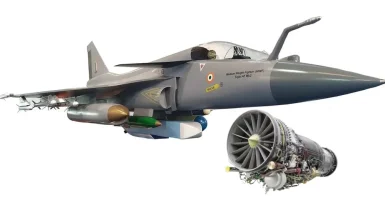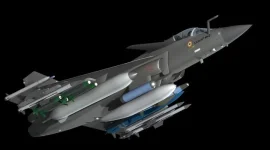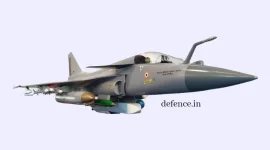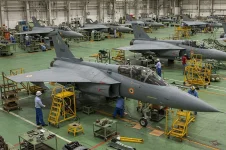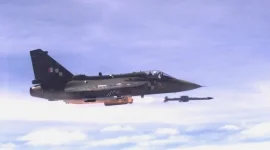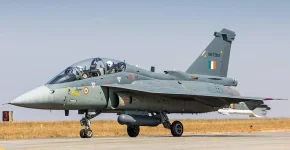- Views: 3K
- Replies: 10
Hindustan Aeronautics Limited (HAL) is undertaking a significant initiative to increase the production rate of the Tejas Mk1A fighter jet, aiming for an ambitious 30 aircraft per year by 2027.
In a statement released on February 18, 2025, HAL Chairman DK Sunil said that the company is engaging private sector firms to provide fully assembled fuselages, complete with internal components, to streamline the final assembly process.
To achieve this increased production rate, HAL is strategically outsourcing the construction of complete fuselages to private sector companies. Traditionally, HAL, along with a network of over 270 Micro, Small, and Medium Enterprises (MSMEs), has managed the production of key aircraft components, including the front, center, and rear fuselages, and wings.
The new strategy involves private companies delivering fuselages that are already assembled with their internal components. This significantly reduces the workload and time needed during final assembly, enabling HAL to concentrate on integrating crucial systems like avionics, weapons, and engines.
Industry reports, along with social media posts, indicate that companies such as Dynamatic Technologies, Tata Advanced Materials Ltd., and L&T are likely to be key players in this initiative, building on their existing contributions to the Tejas supply chain.
By receiving fuselages with pre-installed structural internals, HAL can potentially reduce the overall assembly time by weeks or even months. This modular approach mirrors the practices of global aerospace giants like Boeing and Lockheed Martin, which utilize tiered supplier networks for sub-assemblies to enhance both scalability and production flexibility.
This outsourcing strategy is a direct response to the need to accelerate the final assembly line (FAL) process, a known bottleneck in HAL's production. The Tejas Mk1A requires the precise integration of sophisticated systems, including the ELTA ELM-2052 Active Electronically Scanned Array (AESA) radar, electronic warfare suites, and advanced weapon systems like the Astra Mk1 and ASRAAM missiles.
Delays in assembly, as illustrated by the recent postponement of the first Mk1A delivery to November 2024 (originally slated for February 2024) due to engine supply and development issues, can significantly impact delivery schedules.
By transferring a portion of the initial assembly work to private partners, HAL can dedicate more resources to critical tasks such as flight testing, quality control, and certification. This also mitigates the risk of production interruptions due to supply chain disruptions, such as the ongoing delays in deliveries of GE F404 engines.
Chairman DK Sunil stated that once the fuselage supply chain is stable, HAL is confident in reaching the target of 30 jets per year, accelerating the delivery of aircraft to the Indian Air Force (IAF).
However achieving the target of 30 aircraft annually by 2027 presents significant challenges. Engine availability remains a critical factor, with GE Aerospace facing difficulties in meeting demand due to global supply chain constraints.
News reports and social media posts indicate that while HAL has three Tejas Mk1A aircraft prepared for flight testing, with five more and four trainers anticipated by March-April 2025, the finalization of these aircraft hinges on timely engine deliveries. HAL is relying on GE's commitment to resume supplies from March 2025 to meet its production goals.
Further it is also essential for private sector partners to expand their production capabilities to align with HAL's requirements. The current supplier network, while well-established, needs to invest in advanced machinery, workforce training, and robust quality control processes to ensure the timely delivery of complex assemblies like fuselages, meeting stringent specifications.
However, this presents a valuable opportunity for growth within India's defence industry, fostering job creation, driving innovation, and reducing dependence on international suppliers. The successful implementation of this strategy could serve as a model for future defence production projects in India.

